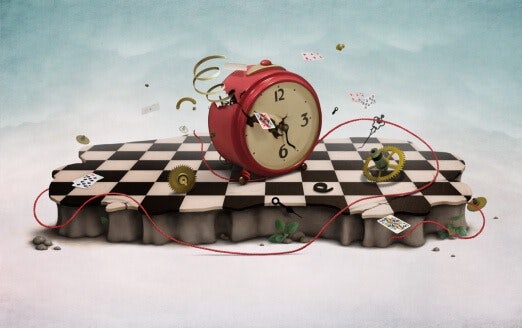How Long Does it Take to Break an Old Sales Habit and Develop a New One?

In his book Outliers: The Story of Success, author Malcolm Gladwell famously purported the notion that it takes 10,000 hours of practise to truly master something. He cited The Beatles’ early days of non-stop rehearsal and touring as an example.
In business circles, there are very few versions of The Beatles. These ranks are largely filled out by investors and innovators (think Warren Buffet and Steve Jobs). We more commonly related to sports figures and their stories of ascent. How many drives and putts did Tiger Woods make growing up? How many hours did Michael Jordan spend taking shots and practicing lay-ups and dunks? How many swings of the bat did Hank Aaron take on his way to dethroning Babe Ruth as the home run king?
Some have questioned the accuracy of the claim; but whether it takes 7,000 or 10,000 hours, the point is that effort, repetition and dedication over time cannot be denied as necessary ingredients for success. As the book title notes, however, these are extreme instances — the outliers of success. For most other roles and capacities, “good enough” is more acceptable than being at the absolute top of their field.
So what about the masses? Consider a standard bell curve of achievers:
- the leading edge (top ~15%) are doing well on their own — tamper with them at your peril
- as for those lagging behind (bottom 15%), they need serious help, which could include letting them go or finding roles that might better suit their talents
- the middle 70% is where the majority of your people are, which means that’s where your biggest opportunity (or challenge) lies
The Problem: Two-day Training Events ≠ 10,000 Hours of Skills Mastery
Too many sales leaders and training managers are mired in the old way of thinking that two-day sales training events are enough. Sorry, but that’s no longer true (if it ever was). It’s great that you’ve set aside time and budget to bring your reps together. Event-based training might work in the moment, but it’s not effective for lasting behavioral change.
You’ve assembled your reps to teach them new skills or concepts to enhance or replace what they’re already doing. Perhaps you’re focused on better closing, negotiating or prospecting. Maybe you’re selling something new to the same buyers or trying to break into new markets with the same offering. But the bottom line is, you want your people to do something different as a result.
Here comes the hard question …
How long does it actually take for someone to learn, remember, recall and flawlessly execute new skills and behaviors until they are essentially habits? The answer is somewhere between Gladwell’s 10,000 hours and the 16 hours your sales reps are likely to spend in a hotel conference room for training.
There’s a lot at stake. Few companies are guilty of overtraining their employees and sales reps. Most don’t devote enough time and effort, which undermines their original objective of changing behaviors. The longer it takes for you to move your middle, the longer it will take for you to achieve your business and sales goals. In the meantime, you’ve reduced the ROI on your training, and your competitors might be doing it better.
Supporting Research: How Long Does It Take to Form a Habit?
Training events and programs are useful to teach new skills, but it’s unreasonable to expect participants to walk away with ingrained, muscle memory-driven habits to replace the old ones. Just how long does that take?
In the research article “How are habits formed: Modelling habit formation in the real world” published in the European Journal of Social Psychology in July 20091, the authors examined this very subject.
The authors note that “…there is consensus that habits are acquired through an incremental strengthening of the association between a situation (cue) and an action, i.e. repetition of a behavior in a consistent context progressively increases the automaticity with which the behavior is performed when the situation is encountered (Verplanken, 2006;Wood & Neal, 2007). ‘Automaticity’ is evidenced by the behavior displaying some or all of the following features: efficiency, lack of awareness, unintentionality and uncontrollability (Bargh, 1994).”
“Automaticity” is the goal in which your sales reps can do what you expect of them without prompting. The challenge is getting your reps to react like Pavlov’s Dog without the need to refer to a manual or use a hybrid of old habits as a crutch for not having mastered the new.
In following a group of individuals trying to form new habits, the researchers found that “performing the behavior more consistently was associated with a better model fit. The time it took participants to reach 95% of their asymptote of automaticity ranged from 18 to 254 days; indicating considerable variation in how long it takes people to reach their limit of automaticity and highlighting that it can take a very long time. Missing one opportunity to perform the behavior did not materially affect the habit formation process. With repetition of a behaviour in a consistent context, automaticity increases following an asymptotic curve which can be modeled at the individual level.”
You can read more about the study to dive into the details, but the range of time (from 2.5 weeks to more than 8 months!) is alarming and should give sales leaders and training managers pause when setting expectations for their training goals. Here are the major takeaways:
- It’s not impossible. The good news is that you can teach your sales reps new skills, techniques, and behaviors.
- It takes time. Are your expectations realistic as for what you hope your reps to adopt and practice following the sales training? Will it happen within a week of the event? Probably not.
Citation:
1How are habits formed: Modelling habit formation in the real world
PHILLIPPA LALLY*, CORNELIA H. M. VAN JAARSVELD, HENRY W. W. POTTS AND JANE WARDLE
University College London, London, UK
European Journal of Social Psychology
Eur. J. Soc. Psychol. 40, 998–1009 (2010)
Published online 16 July 2009 in Wiley Online Library
http://onlinelibrary.wiley.com/doi/10.1002/ejsp.674/abstract

Research: Strategies for Sustaining Impact of Sales Training
DownloadGet industry insights and stay up to date, subscribe to our newsletter.
Joining our community gives you access to weekly thought leadership to help guide your planning for a training initiative, inform your sales strategy, and most importantly, improve your team's performance.






